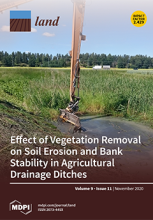/ library resources
Showing items 1 through 7 of 7.Nine Latin American countries plan to use silvopastoral practices—incorporating trees into grazing lands—to mitigate climate change. However, the cumulative potential of scaling up silvopastoral systems at national levels is not well quantified.
There are numerous studies on the effect of grazing on the physical and chemical parameters of soils. However, the impact of grazing on the temperature regime of the alas soils in Central Yakutia is still poorly understood.
Recently, improving technical efficiency is an effective way to enhance the quality of grass-based livestock husbandry production and promote an increase in the income of herdsmen, especially in the background of a continuing intensification of climate change processes.
Grazing leads to the reduction of biomass and plays a critical role in land degradation in arid and semiarid lands. However, the indirect effects of grazing on the ecosystem, e.g., the effect on seed dispersal, have not been well understood.
Mediterranean regions are likely to be the most vulnerable areas to wildfires in Europe.
Land in Cameroon is under growing pressure – powerful commercial interests;changing climate conditions and shifting demographic flows including mass migration and increasing population density.
Highly digestible forages are associated with an in vitro low-methane (CH4) rumen fermentation profile and thus the possibility of reducing CH4 emissions from forage-based systems.
Land Library Search
Through our robust search engine, you can search for any item of the over 73,000 highly curated resources in the Land Library.
If you would like to find an overview of what is possible, feel free to peruse the Search Guide.







